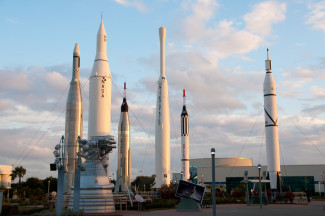
Johns Hopkins UniversityEst. 1876
America’s First Research University
Taking Nazi Technology

Taking Nazi Technology is a book about the largest-scale attempt at corporate/industrial espionage in history, about scientist spies and covert missions to steal technologies. When I discuss the topic, however, people sometimes ask whether it's really fair to talk about this as a book about "espionage" or "scientific intelligence." It's a fair question, but a tricky one, so I thought I would take the opportunity of this blog post to explore the topic.
When we think of espionage, we often think of James Bond, The American, the CIA as it's portrayed in films – dramatic, secretive, high-stakes, illegal action. Even in an earlier era when Tom Clancy's character Jack Ryan was a historian-turned-analyst (unlike the recent TV remake, which made the mistake of casting Ryan as an economist), the emphasis was on secret information.
In contrast, the programs to take German science and technology after the Second World War ranged from top secret (such as the Alsos mission to investigate German advances in nuclear technology) to so open they were advertised in newspapers and trade journals. Further, once Germany was defeated and split into four occupation zones, each governed by one of the major Allied Powers (the United States, United Kingdom, France, and Soviet Union), these occupation governments decided what was allowed and what forbidden. The investigations, as a result, were entirely legal. Can an out-in-the-open, government-sanctioned activity still be considered espionage/intelligence?
While it might be less dramatic than secret missions, the vast majority of work done by intelligence agencies involves processing "open source intelligence." Historically, this meant reading newspapers, magazines, governmental publications, academic research, radio programs, and anything else publicly available. Modern versions would include social media, and other digital sources as well. This less glamorous information source is also by far the most widely used, and often the most reliable.
Historians have argued, for example, that Stalin would have been far better informed about American policymakers' plans and intentions if he simply read The New York Times rather than relying on his intelligence agencies, since the agencies were full of people seeking to play politics and justify the value of the "secret" (but often less accurate) information they had gathered.

At a basic level, then, the programs seeking to capture "intellectual reparations" from Germany were a kind of open-source intelligence aimed at scientific/technical targets, both copying available documents and interrogating reluctant scientists.
Still, you might wonder, what about more old-fashioned spying? Steal programs and secret agents? They, too, played a role, though the historical record is (unsurprisingly) much less detailed about these. Agencies often note what they perceived as other countries stealthily recruiting (or even kidnapping) German scientists, in contravention of agreements for sharing German personnel, yet few record their own efforts. This makes it difficult to discern which reported spies were real, which reports were political tools to get governments to devote more resources to intelligence efforts, and which were misunderstandings in a chaotic time.
As I discuss in Taking Nazi Technology, American and British agencies kept especially detailed notes about French and Soviet secret agents "stealing" away scientists. In several cases, agents from the French secret service (Securité militaire) visited top German scientists and threatened them not to reveal their secrets to the Americans/British, or else they faced having their names added to the Allied list of war criminals. American and Soviet agents prowled occupied Berlin, which had hosted many scientific institutes before the war, offering competing contracts to remaining scientists. British planners attempted to find out what rates American agencies were offering so they could at least match that salary, and seriously considered going it alone in recruiting scientists before finally agreeing to a cooperative program. American agents rarely report using physical force move scientists against their will, but memoirs from some members of these investigatory teams indicate that their "requests" to these scientists were not fully optional.
Ultimately, espionage/intelligence per se is only part of the story of Taking Nazi Technology, but it is a crucial part. Readers interested in further reading on scientific espionage/intelligence in this era would do well to find a copy of the following excellent histories:
- Cork Wars: Intrigue and Industry in World War II by David A. Taylor. https://jhupbooks.press.jhu.edu/title/cork-wars
- Spying on Science: Western Intelligence in Divided Germany, 1945-1961 by Paul Maddrell. https://global.oup.com/academic/product/spying-on-science-9780199267507?cc=us&lang=en&
- Spies: The Rise and Fall of the KGB in America by John Earl Haynes and Alexander Vassiliev. https://www.amazon.com/Spies-Rise-Fall-KGB-America/dp/0300164386
- American Hegemony and the Postwar Reconstruction of Science in Europe by John Krige. https://mitpress.mit.edu/books/american-hegemony-and-postwar-reconstruction-science-europe
- Spying on the Bomb: American Nuclear Intelligence from Nazi Germany to Iran and North Korea by Jeffrey Richelson. https://www.amazon.com/Spying-Bomb-American-Nuclear-Intelligence/dp/0393329828
Douglas M. O'Reagan is a historian of technology, industry, and national security. He earned his PhD from the University of California, Berkeley. O'Reagan is the author of Taking Nazi Technology: Allied Exploitation of German Science after the Second World War.


